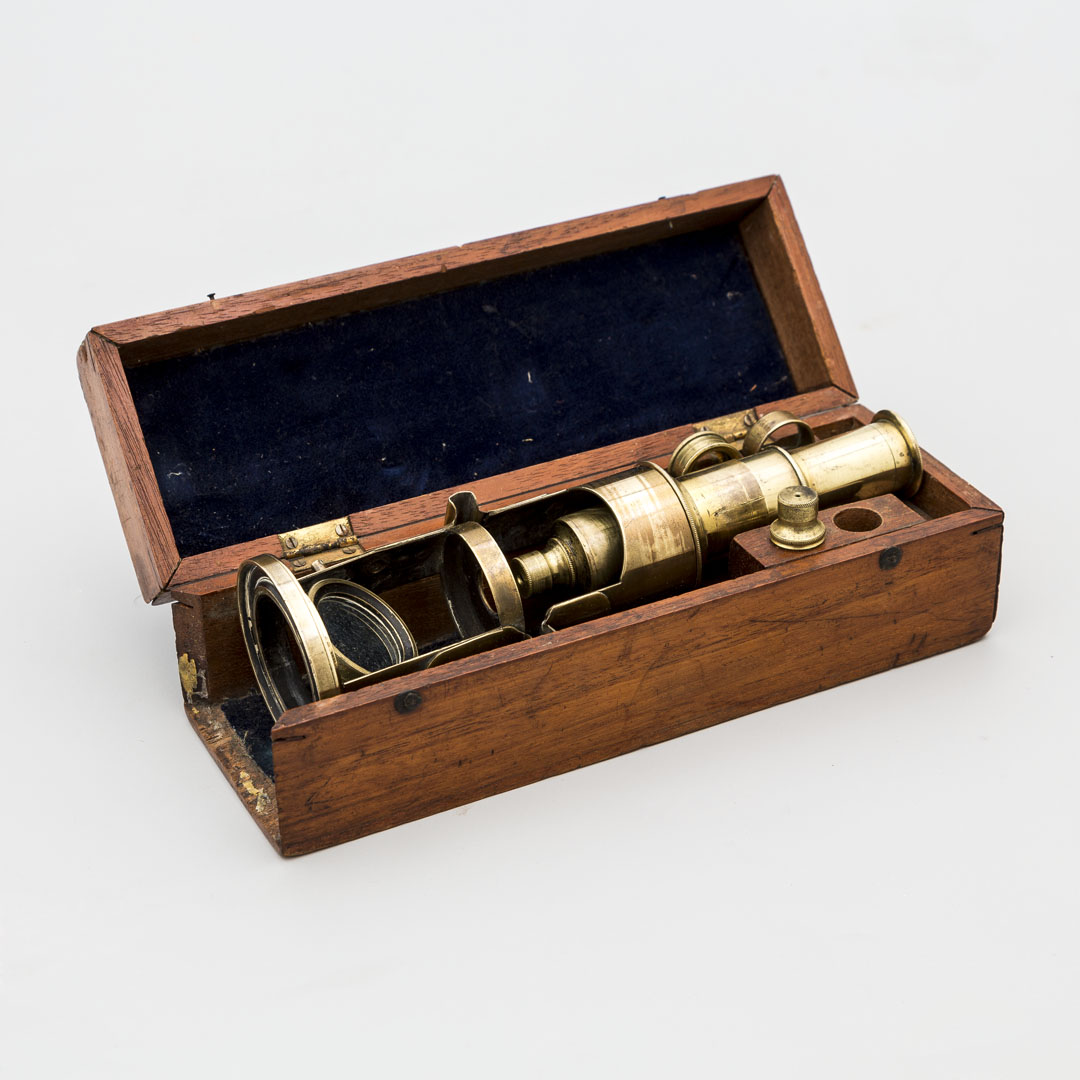Adams and Martin around 1750 designed in England a curious model of a portable microscope enclosed in a tube. Drum or barrel microscopes as they were called have their origin in the words barrel (barrel) or drum (drum). The original model (No. 6 of the collection) was small, 15 cm high, and very simple (Fig. 1 and 2)

Figure 1. Diagram of a Nachet microscope model. Left: simple model. Right: model with mechanical focus and incident lighting.

Figure 2 Original design of the Fraunhofer 1811 microscope.
Later English models increased in size to 18 cm. (No. 7 and No. 8 of the collection). Finally, around 1800, the large English barrel model was developed, measuring 27 cm high (No. 41). Many are manufactured without a brand name and other manufacturers reach great perfection, such as Lennie, who manufactured the number 42 of the collection in Edinburgh in 1857. What is common to all variants of the English drum model is that it is a vertical tube, unstable and with practically the same diameter at the top and bottom. The platen is inside the tube. (Fig. 3)
This English model will be perfected on the European continent, especially by Oberhaüser and Nachet (models from the collection No. 37, No. 38 and No. 39) as well as in Germany by Fraumhofer and by Schieck father and son (No. 52i, from the collection). George Oberhauser (1798-1868) developed a microscope with a very heavy stand (foot) filled with lead, which gave it great stability compared to the English model. This model was called «continental» by the English (Fig. 4).

Figure 3. Evolved Nachet model.

Figure 4. Microscope designed by Secretan & Lerembour
The Evolution of Drum or Barrel Microscopes
Oberhaüser designed the prototype of the drum or barrel microscope model with a focusing system by raising the stage, raising it towards the objective by means of a vertical control, as can be seen in microscope No. 52 and in de Nachet in Fig. 5 . To the initial illumination by light reflected by a concave mirror located at the base of the apparatus, incident illumination was added by means of a magnifying glass with an articulated arm (Fig. 6). Focusing is finally carried out by means of a rack located in the optical tube with a pinion wheel (No. 52c). Also in France the model increased in size, thus the one manufactured in 1840 by Lerembours and Sécrétan, which already measures 26 cm (Fig. 7). Later these simple models evolve into increasingly complex pieces (Fig. 8).
In the Collection the numbers 6, 7, 8, 37, 38, 39, 40, 41, 42, 52, 52c, 52e and 52i can be seen as drum or barrel microscopes.

Figure 5. Evolution of the French drum model towards a more complex shape.

Figure 6. Simple English drum microscope model

Figure 7. English barrel microscope advertisement.

Figure 8. Complex barrel microscope. On the right side you have your focus system.











